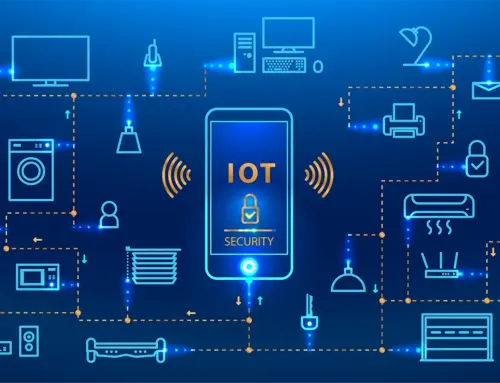
Cybersecurity Challenges in Augmented Reality (AR).
In the rapidly evolving landscape of digital experiences, augmented reality (AR) and virtual reality (VR) stand out as transformative technologies reshaping how we interact with the world. However, as these immersive experiences become more integrated into daily life, the importance of cybersecurity becomes paramount. In this article, we explore the cybersecurity challenges inherent in AR and VR environments, emphasizing the need for robust security measures to protect user data and ensure safe, immersive interactions. Whether you are a business leveraging these technologies or a user enjoying their applications, understanding the cybersecurity landscape is essential to safeguarding against potential threats and vulnerabilities.
Understanding Cybersecurity in AR and VR
Definition of Cybersecurity in Extended Reality
Cybersecurity in the realm of extended reality, which includes augmented reality and virtual reality, refers to the protective measures and protocols implemented to safeguard sensitive data and ensure the integrity of digital interactions. As AR and VR technologies become more sophisticated, the potential for cybersecurity threats, such as unauthorized access and data breaches, increases significantly. These technologies, while offering extraordinary immersive experiences, also introduce vulnerabilities that can be exploited by hackers and malicious entities. Thus, cybersecurity in extended reality focuses on creating secure virtual environments, leveraging encryption and authentication protocols To defend against potential cyber threats, ensuring that user data remains protected and the integrity of these virtual worlds is maintained is critical, especially in mixed reality applications.
The Role of Cyber Security in Augmented and Virtual Reality
Cyber security plays a critical role in the domain of augmented and virtual reality by fortifying these technologies against various security threats. As AR and VR systems become more prevalent in both commercial and personal use, the risk of cybersecurity challenges such as malware, data breaches, and unauthorized access grows, emphasizing the need for secure headset technology. Cyber security helps in implementing security measures like encryption and robust authentication processes, which are vital in protecting sensitive information and maintaining user privacy. By proactively addressing potential vulnerabilities, cyber security ensures that VR and AR platforms can provide safe, reliable, and immersive experiences, empowering businesses and individuals to explore these technologies without compromising their data security or personal privacy.
Importance of Cybersecurity in Reality Technologies
The significance of cybersecurity in reality technologies, specifically within the realms of AR and VR, cannot be overstated, especially as we consider the implications of using AR. As these technologies increasingly intersect with real-world applications, the potential impact of cybersecurity risks becomes more profound. Reality technologies are not only reshaping entertainment and gaming but are also being used in critical sectors such as healthcare, education, and industrial design. Ensuring data privacy and security in these applications is crucial to prevent unauthorized access and protect sensitive information from emerging security challenges. Cybersecurity measures serve as a safeguard against potential breaches and vulnerabilities in the use of AR technologies. Safeguarding against potential breaches and vulnerabilities is essential in the landscape of security issues affecting augmented reality and virtual reality., providing the necessary trust and reliability for users and enterprises to confidently integrate AR and VR into their operations. By prioritizing cybersecurity, we ensure the seamless and secure adoption of these transformative technologies.
Identifying Cybersecurity Risks in AR and VR
Common Cybersecurity Threats in Virtual and Augmented Reality
In the expansive realm of virtual and augmented reality, the cybersecurity risks are as diverse as they are significant. These immersive technologies open new avenues for cyber threats, primarily due to their reliance on vast amounts of user data and interconnected systems. Common threats include security challenges that arise in the realm of AR technologies. unauthorized access, where hackers breach security protocols to steal sensitive information, and malware infections that can compromise VR systems. Such attacks are often exacerbated by the integration of artificial intelligence, which, while enhancing user experiences, can also introduce new vulnerabilities. Cybersecurity measures must be robust, including encryption and authentication processes, to safeguard against these security issues. By anticipating potential breaches, users and businesses can ensure that their ventures into AR and VR are secure and reliable.
Vulnerabilities in AR Systems
Augmented reality systems are uniquely susceptible to specific vulnerabilities, owing to their integration of real-world and digital environments. The use of AR devices and applications often involves the collection and processing of sensitive data, creating potential targets for cyber attacks. Vulnerabilities can arise from inadequate security protocols, leading to unauthorized access and data breaches. Additionally, the applications of AR in sectors such as healthcare and industrial design heighten the stakes of these security challenges. To mitigate these risks, it is crucial for organizations to implement comprehensive cybersecurity solutions that include advanced encryption techniques and strict authentication measures. By fortifying AR systems against potential threats, businesses can protect their assets and ensure the seamless operation of their augmented reality initiatives.
Potential Cybersecurity Risks in the Virtual World
The virtual world, with its vast and interconnected VR environments, presents distinct cybersecurity challenges that must be addressed with urgency. As VR technology becomes more integrated into various applications, the risk of cybersecurity threats, such as data breaches and malware infiltrations, increases. VR platforms often require the transmission of large volumes of user data, which, if not adequately protected, can be intercepted by malicious actors. Furthermore, the immersive nature of virtual reality can create privacy concerns, as personal information is often shared within these digital landscapes. To combat these risks, organizations must employ a proactive approach, leveraging advanced security measures, such as encryption and real-time monitoring, to safeguard against unauthorized access and ensure the integrity of their virtual environments. By doing so, they can provide users with a secure and trustworthy VR experience.
Privacy Concerns in Augmented and Virtual Reality
Security and Privacy Issues in AR and VR
In the dynamic domain of augmented reality and virtual reality, security and privacy issues are at the forefront of technological discourse, particularly regarding the use of VR devices. As AR and VR systems become increasingly integrated into daily life and industry operations, the potential for cybersecurity risks escalates. The immersive nature of these technologies, coupled with the vast amounts of sensitive data they process, makes them prime targets for malicious cyber threats. Unauthorized access and data breaches are significant security issues that can affect users of VR devices. can compromise user data and undermine the integrity of VR environments. Therefore, robust security measures, including encryption and rigorous authentication protocols, are imperative. At Teamwin Global Technologica, we recognize the paramount importance of safeguarding your enterprise against these vulnerabilities, ensuring that your interactions within augmented and virtual realities are secure and trustworthy.
Impact of Artificial Intelligence on Cybersecurity in Reality Technologies
The integration of artificial intelligence within augmented reality and virtual reality technologies heralds both innovation and new cybersecurity challenges. AI, while enhancing the capabilities and user experience of AR and VR systems, also introduces complex vulnerabilities that require vigilant attention. AI algorithms can both identify potential threats and inadvertently create new security gaps, making AI a double-edged sword in the realm of cybersecurity. At Teamwin Global Technologica, we emphasize the importance of sophisticated security protocols to fortify your business against potential AI-driven cyber threats. By leveraging AI’s capabilities for vigilant monitoring and swift response strategies, we empower our clients to anticipate and mitigate cybersecurity risks, ensuring that their AR and VR initiatives remain resilient and secure against evolving challenges.
User Privacy in Virtual and Augmented Reality Environments
User privacy in virtual and augmented reality environments is a critical concern that demands proactive attention and robust protective measures. As VR platforms and AR applications increasingly collect and process sensitive information, the risk of privacy breaches heightens. The immersive experiences provided by these technologies often require the sharing of personal data, which, if not adequately protected, can be exposed to unauthorized access and exploitation by hackers. Teamwin Global Technologica is dedicated to safeguarding your enterprise by ensuring comprehensive data privacy solutions that fortify AR and VR systems against such vulnerabilities. We assure your infrastructure is secure, safe, and equipped with cutting-edge security solutions that prioritize user privacy, fostering trust and confidence in your augmented and virtual reality engagements.
Mitigating Cybersecurity Challenges in AR and VR
Strategies for Securing AR and VR
To effectively address the cybersecurity challenges inherent in augmented reality and virtual reality technologies, a comprehensive approach is essential. At Teamwin Global Technologica, we recognize the importance of implementing robust security measures tailored to these immersive environments, particularly in the context of augmented reality technology. This includes deploying advanced encryption techniques to safeguard sensitive data and utilizing multi-factor authentication to prevent unauthorized access. By integrating these security solutions, organizations can protect their AR and VR systems from potential breaches. Moreover, regular security audits and real-time monitoring are crucial strategies to identify and mitigate cyber threats swiftly. With a proactive cybersecurity stance, businesses can ensure the integrity and privacy of user data, fostering trust and confidence in their use of augmented and virtual reality technologies.
Best Practices for Cybersecurity in Extended Reality
In the realm of extended reality, encompassing both AR and VR, adhering to best practices in cybersecurity is paramount to safeguarding sensitive information and maintaining robust security protocols. Teamwin Global Technologica emphasizes the importance of continuous education and training for personnel to recognize and respond to cybersecurity threats effectively. Implementing rigorous security measures, such as endpoint protection and regular software updates, helps shield systems from vulnerabilities and malicious attacks. Establishing a culture of cybersecurity awareness among users and developers is also critical, ensuring that everyone involved in AR and VR applications understands the significance of data privacy and security. By prioritizing these best practices, organizations can fortify their reality technologies against evolving cyber threats, ensuring secure and immersive experiences for all users.
Future Trends in Reality Cybersecurity Solutions
As augmented reality and virtual reality technologies continue to evolve, so too must the cybersecurity solutions that protect them from emerging threats in mixed reality environments. Teamwin Global Technologica is at the forefront of anticipating future trends in reality cybersecurity, focusing on innovative strategies to combat emerging threats associated with digital content. The integration of artificial intelligence into security protocols is expected to enhance threat detection and response capabilities, providing more dynamic and adaptive protection for AR and VR systems. Additionally, the development of decentralized security frameworks promises to offer more resilient defenses against cyber threats, ensuring data privacy and integrity across distributed networks. By staying ahead of these trends, we empower our clients to navigate the complexities of the digital landscape with confidence, ensuring their virtual environments remain secure and reliable for years to come.
5 Surprising Facts about Cybersecurity Challenges in Augmented Reality (AR)
- AR devices can be vulnerable to data breaches, exposing sensitive user information and location data.
- Malicious AR applications can manipulate the user’s perception of reality, leading to potential safety hazards.
- AR systems often rely on cloud computing, which can create additional security risks if data is not properly encrypted.
- Insider threats are a significant concern, as employees with AR access can misuse the technology to gain unauthorized information.
- As AR technology evolves, so do the tactics of cybercriminals, making it challenging for organizations to keep up with emerging threats.
What are the main cybersecurity challenges in augmented reality (AR) and virtual reality (VR)?
The main cybersecurity challenges in augmented reality (AR) and virtual reality (VR) include vulnerabilities to data breaches, unauthorized access to user data, and the potential for malicious actors to exploit security weaknesses. These risks arise from the immersive nature of AR and VR technologies, which often require the collection and processing of sensitive information to create realistic experiences.
How can we enhance security in AR systems?
Enhancing security in AR systems involves implementing robust security measures such as encryption of sensitive data, using biometric security for authentication, and regularly updating software with the latest security patches. Additionally, developers should design applications with security and privacy considerations from the ground up to mitigate potential cybersecurity risks.
What cybersecurity risks are associated with using VR technology?
The cybersecurity risks associated with using VR technology include exposure to malware, data breaches, and potential hacking attempts. VR devices, like headsets and controllers, can be entry points for cyber threats if not properly secured. Users should be educated about these risks and encouraged to follow best practices for cybersecurity.
What security protocols should be implemented for AR applications?
AR applications should implement security protocols such as secure data transmission through encryption, user authentication measures, and regular security audits to identify vulnerabilities. Additionally, developers should establish clear privacy policies to protect user data and ensure compliance with security standards.
How do security issues differ between augmented reality and virtual reality?
While both augmented reality (AR) and virtual reality (VR) face similar cybersecurity challenges, the nature of their interactions with the real world can lead to different security issues. AR systems often overlay digital content onto the physical environment, increasing the risk of unauthorized access to sensitive information through real-world interactions, whereas VR environments may pose risks related to user isolation and data handling within completely virtual contexts.
What role does artificial intelligence (AI) play in mitigating cybersecurity threats in AR and VR?
Artificial intelligence (AI) can play a significant role in mitigating cybersecurity threats in AR and VR by enabling real-time threat detection, predictive analytics, and automated response systems. AI can help identify unusual patterns of behavior that may indicate a security breach and enhance overall security posture by providing adaptive security measures tailored to the specific needs of AR and VR applications.
What are the best practices for ensuring data privacy in augmented reality systems?
Best practices for ensuring data privacy in augmented reality systems include limiting data collection to only what is necessary, implementing strong user consent processes, and utilizing encryption methods to protect sensitive information. Additionally, regular security training for users and developers can raise awareness of privacy concerns and promote a culture of security.
How can users safeguard their personal information while using AR and VR technologies?
Users can safeguard their personal information while using AR and VR technologies by being cautious about the data they share, using strong and unique passwords, enabling two-factor authentication, and keeping software up to date with the latest security patches. Being aware of privacy settings and understanding how personal data is used by applications can also enhance security.
What is the future of cybersecurity in augmented and virtual reality?
The future of cybersecurity in augmented and virtual reality is likely to involve more sophisticated security solutions, increased collaboration between developers and cybersecurity experts, and ongoing research to understand emerging threats. As AR and VR technologies evolve, so too will the strategies to defend against cybersecurity threats, making it essential for stakeholders to stay informed and proactive.








